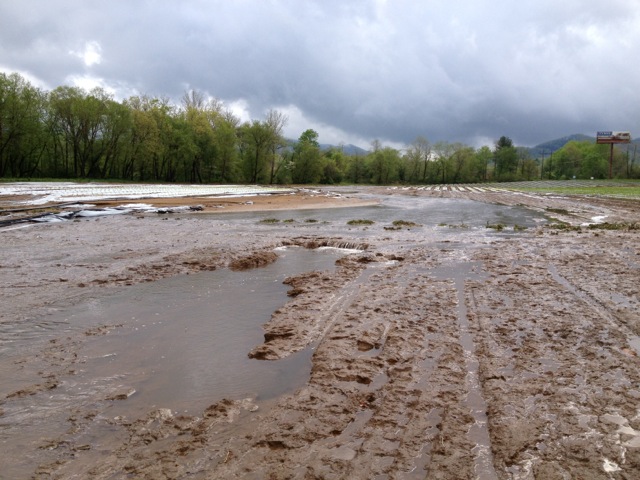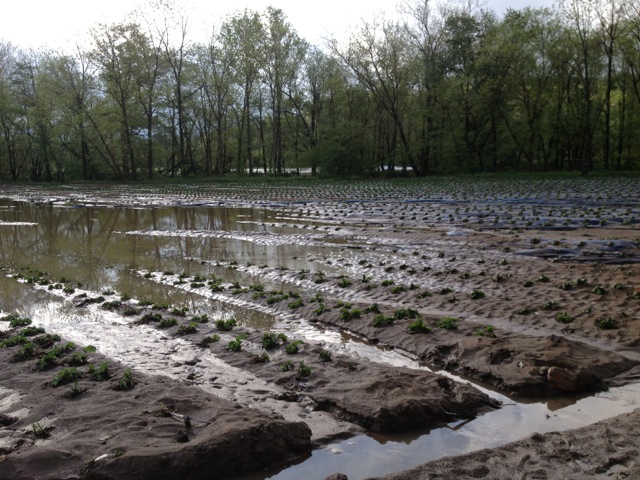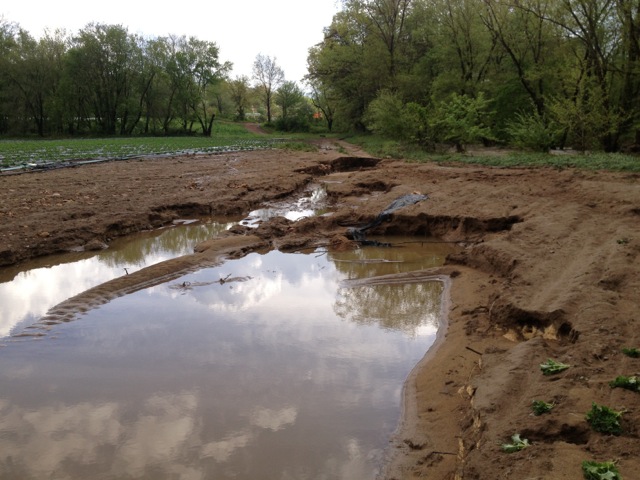Given that most of North Carolina and all of South Carolina are classified as a humid subtropical climate, we are used to heavy rain events. We see it all in the Carolinas; afternoon thunderstorms, tropical cyclones, and hurricanes.
Depending on your location in the state and proximity to water channels, you might also be dealing with flooded fields.
The following information is adapted from the US Food and Drug Administration’s Guidance for Industry: Evaluating the Safety of Flood-affected Food Crops for Human Consumption and NCSU’s Food Safety Infosheet: Recovering From a Storm.
The technical definition of flooding is when water is flowing or overflowing a field. This is different from pooled water, which can occur after heavy rainfall. Pooled water is not likely to cause contamination of edible plant parts. Therefore, the following recommendations apply to crops that have been flooded, not submerged under pooled water.
Flooding can be potentially hazardous to public health when crops are submerged in flood water that has been exposed to sewage, chemicals, heavy metals, pathogenic microorganisms, or other contaminants.
- It is important to know about potential contamination sites upstream that have the potential to flood your fields.
- It is also important to stay informed about any local catastrophes, such as petroleum leaks, chemical spills, or other disasters caused by upstream flooding during the weather event that caused the flooding.
- Flooding is a concern for both crops exposed to flood water as well as future crops grown in previously flooded fields.
Edible portions of a crop may become contaminated even if the plant is not totally submerged. Public health concerns can also arise from mold or other toxins that contaminate the crop as a result of exposure to contaminated water. If the edible portion of a crop is exposed to flood waters, it is considered adulterated and should not enter human food channels.
“If the edible portion of a crop is exposed to flood waters, it is considered adulterated and should not enter human food channels.”
Since there are no means of effectively cleaning the contaminated edible portion, the FDA recommends these crops be kept separate from those that have not been exposed to flood water and be disposed of in a manner that does not contaminate “clean” crops.
Crops considered at risk for contamination from flooded waters (i.e., those whose edible parts have come into contact with flood water) include:
- above-ground crops such as leafy greens, tomatoes, peppers, string beans, berries, watermelon, and squash, and
- below-ground crops such as beets, potatoes, carrots, and garlic.
However, if below-ground crops get flooded early in their growing season and are more than four weeks from harvest, contamination risks are low. Those harvested less than four weeks after a flood event should be washed, rinsed, sanitized, and cooked before consumption.

Growers should assess the potential human safety risks for food crops with edible portions that were in or near flood waters but did not come into contact with flood water.
“If below-ground crops get flooded early in their growing season and are more than four weeks from harvest, contamination risks are low.“
If the edible portion of the crop developed after the flood event, the potential for contamination may be low. If the lowest edible portion of the crop was well above floodwater levels, the risk of contamination could also be low. However, there can be a risk if contaminated water is splashed onto the edible portion. It is important to make sure the crop can be harvested without cross-contamination from those contaminated by flood water. The FDA recommends testing edible plant parts if there is a concern about possible contamination. Growers are advised to test for mycotoxins, aflatoxin, fumonisin, heavy metals, pesticides, human pathogens, and any other contaminants from a known contaminant such as petroleum from a local spill.
It is generally recommended that growers wait 30-60 days before replanting in flooded fields. However, growers should assess the field history in order to decide when to replant.
Things to consider before replanting include:
- Determining the source of flooding and whether or not flood waters contained any know contaminants
- Whether or not the field sufficiently dried out
- The length of time since the flooding occurred
- Crop type
- Harvest date
Growers should have soil from flooded fields tested for the presence of contaminants prior to planting if there were any known contaminants in the flood water. If contaminants are present in the soil, growers should contact university extension specialists for replanting recommendations.

Have questions? Want help with this on your farm? We’d love to help! Get in touch with our local produce safety team.



